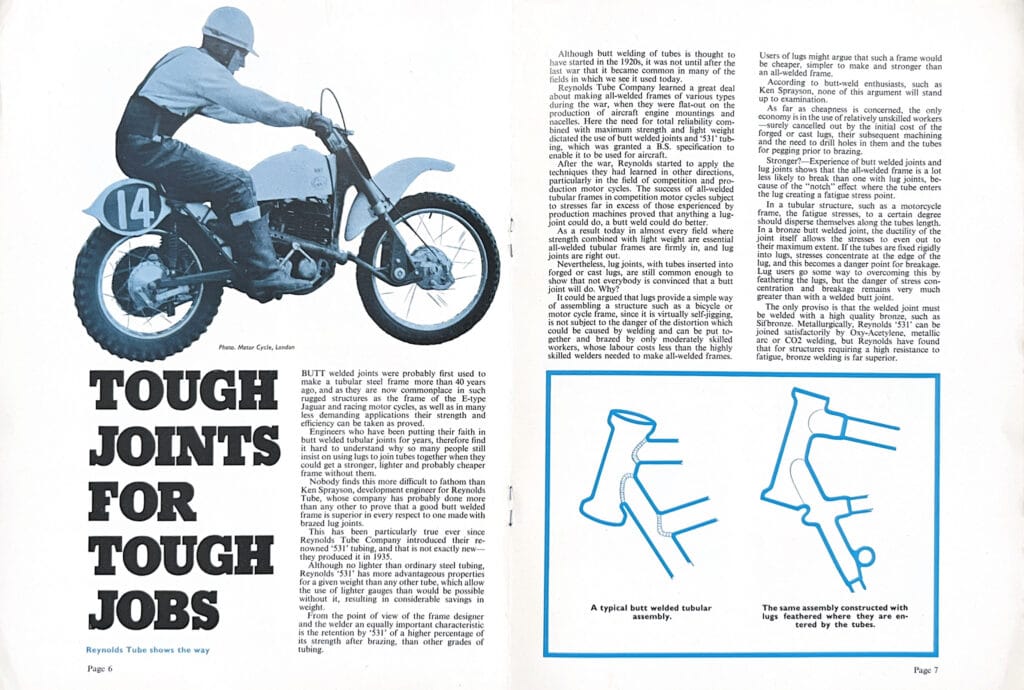Introduction
In the early 1960s, motocross was a battleground where only the toughest survived. Among the fiercest competitors were the Rickman brothers, Don and Derek, who were not only skilled riders but also visionary engineers. Their “Metisse” motorcycles became legends in the motocross world, thanks in no small part to their collaboration with Suffolk Iron Foundry (SIF) and the innovative use of bronze-welding techniques. This case study explores this historical partnership and how it revolutionized motorcycle engineering.
The Challenge
The Rickman brothers faced a daunting challenge as they prepared for the Moto-Cross des Nations at Knutstorp in Sweden. The competition was intense, and the motorcycles needed to withstand extreme conditions. The brothers knew that both rider skill and machine durability were crucial. Traditional welding methods often led to structural weaknesses that could spell disaster in a race. They needed a solution that would ensure their motorcycles were both strong and reliable.
The Breakthrough with SIF
The solution came from an unexpected collaboration with Suffolk Iron Foundry (SIF). Founded in 1935, SIF was renowned for its expertise in metalworking and welding. Their innovative “Bronze-Welding” process caught the attention of the Rickman brothers. Unlike traditional welding, which could cause distortion and residual stresses, bronze-welding provided a low-temperature alternative that preserved the integrity of the metal.
After consulting with SIF representatives, the Rickmans decided to use SIFBRONZE 104 Fluxcoated rods. These rods offered high strength and ductility, essential for the continuous high-speed welds required in motorcycle frames. This partnership marked the beginning of a new era in motorcycle engineering.
Engineering Excellence
The Rickman brothers meticulously designed their “Metisse” frames, incorporating the bronze-welding techniques recommended by SIF. This process involved using SIFBRONZE rods to join light alloy steel tubes, ensuring that the frames were both strong and lightweight. The low application temperature of the bronze-welding process reduced the risk of distortion, a common problem with traditional welding methods.
Reynolds Tube Company, another key player in the industry, had also made significant strides in using butt welded joints and “531” tubing for high-stress applications like aircraft and racing cars. These advancements further validated the Rickman brothers’ choice of materials and techniques, providing a strong foundation for their innovative designs.

Triumph at Moto-Cross des Nations
The effectiveness of the SIF-supported engineering was put to the test at the Moto-Cross des Nations in August 1963. Don Rickman rode his “Metisse” through the challenging terrain, emerging victorious. The victory was a testament to the machine’s superior handling and durability, directly resulting from the advanced welding techniques and materials used.
Legacy of Innovation
The success of the “Metisse” motorcycles established the Rickman brothers as pioneers in motorcycle engineering. Their collaboration with SIF demonstrated the importance of combining innovative design with advanced materials and techniques. This partnership not only led to competitive success but also influenced the broader field of motorcycle manufacturing.
Ken Sprayson of Reynolds Tube Company, a contemporary in the field, echoed the sentiments of the Rickman brothers. He advocated for the superiority of butt welded joints and the use of “531” tubing, reinforcing the shift away from traditional lug joints. This alignment of expert opinions further solidified the legacy of the Rickman-SIF collaboration.
Conclusion
The partnership between the Rickman brothers and Suffolk Iron Foundry is a shining example of how innovation and collaboration can lead to groundbreaking achievements. By leveraging SIF’s advanced bronze-welding techniques, the Rickmans were able to create motorcycles that not only withstood the rigors of motocross racing but also set new standards in engineering excellence.
This historical case study highlights the transformative power of innovative welding techniques in the automotive and motorsport industries. The Rickman brothers’ triumph at the Moto-Cross des Nations stands as a testament to their visionary approach and the critical support provided by SIF, illustrating the enduring impact of their pioneering work.
